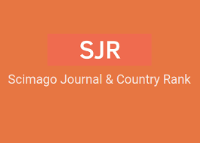СКРИНИНГ БИОМОРФОЛОГИЧЕСКИХ ПРИЗНАКОВ И ЦИТОГЕНЕТИЧЕСКИХ ОСОБЕННОСТЕЙ POLEMONIUM CAERULEUM L. ПОСЛЕ ПРИМЕНЕНИЯ КОЛХИЦИНА
Аннотация
Состояние вопроса. В настоящее время достаточно актуальным в селекции является создание сортов с высокими показателями урожайности сырья и содержания биологически активных соединений.
Цель работы – выявление перспективных форм синюхи голубой для дальнейшего включения в селекционный процесс на основании биоморфологических, анатомических, цитогенетических исследований и биопродуктивности колхицин-индуцированной и дикорастущей форм в сравнении с сортом Лазурь.
Материалы и методы. Для получения полиплоидов в 2018 году семена синюхи голубой сорта Лазурь проращивали в чашках Петри на фильтровальной бумаге при комнатной температуре. Когда корешки достигали длины семени, их помещали в разные концентрации раствора колхицина 0,05%, 0,1%, 0,2% и 0,52% на 12 и 24 часа, затем промывали в проточной воде в течение трёх часов.
Результаты. В статье впервые приведены данные по сравнительному изучению трех форм синюхи голубой по морфологическим признакам, микроскопии эпидермиса листьев и цитогенетическому анализу. Установлено, что продуктивность сырья подземной части тетраплоидных форм растений в поколении С1 достоверно превышала диплоидную и дикорастущую формы растений на 32 %, а также урожайность семян на 22 %. В поколении С2 урожайность сырья (корневищ с корнями) у тетраплоидных растений увеличивается по отношению к контролю на 56 %, семян на 34 %. Количественное определение суммы тритерпеновых сапонинов в пересчете на β-эсцин в растительном материале трех форм синюхи голубой показало превышение данного показателя у колхицинированной формы на 24 % в траве и на 36 % в корневищах с корнями, у дикорастущей формы – на 15 % в надземной части и уменьшение в подземной части на 9 % по отношению к контролю. Обнаружено, что растения колхицинированной и дикорастущей форм отличаются наличием более крупных устьиц по сравнению с контролем. По рисунку DAPI-бэндина и распределения 45S рДНК и 5S рДНК генов построена обобщенная видовая идиограмма синюхи голубой с учетом полиморфных вариантов рисунков DAPI-бэндина и указанием расположения сайтов 45S рДНК и 5S рДНК генов. Выявлена цитогенетическая стабильность полученной тетраплоидной формы.
Заключение. В статье приведены сравнительные исследования по морфологическим признакам, биопродуктивности, по микроскопии эпидермиса листьев и цитогенетическому анализу тетраплоидной формы (колхицинированной) синюхи голубой в сравнении с сортом Лазурь (диплоидная форма) и дикорастущей формой растений синюхи.
Скачивания
Литература
Список литературы
Бадаева Е.Д., Салина Е.А. Структура генома и хромосомный анализ растений // Вавиловский журнал генетики и селекции, 2013. Т. 17, № 4/2. С. 1017-1043.
Бурмистров А.Н., Никитина В.А. Медоносные растения и их пыльца: Справочник. М.: Росагропромиздат. 1990, 192 с.
Государственная фармакопея РФ XIV издания. Федеральная электронная медицинская библиотека Министерства здравоохранения Российской Федерации, 2018 ФС. 5.3.0003.15, ФС.1.5.1.0002.15). https://femb.ru/record/pharmacopea14 (дата обращения 01.07.2020).
Государственная Фармакопея Российской федерации XIV изд. ФС.2.5.0020.15. 2015. http://pharmacopoeia.ru/gosudarstvennaya-farmakopeya-xiii-online-gf-14-online (дата обращения: 21.09.2021)
Зеленцов С.В., Мошненко Е.В. Морфологические особенности пыльцы и нарушения мейоза у автотетраплоидов сои // Научно-технический бюллетень Всероссийского научно-исследовательского института масличных культур, 2004. Т. 1. N 130. C. 10-14.
Мальцева А.А. Трава синюхи голубой – перспективный источник тритерпеновых сапонинов / А.А. Мальцева, А.А. Сорокина, Т.А. Брежнева, А.С. Чистякова, А.И. Сливкин // Фармация. 2011. № 7. С. 13-16.
Муравенко О.В., Зеленин А.В. Исследование хромосомной организации геномов мелкохромосомных растений // Генетика. 2009. T. 45. № 11. C. 1516-1529.
Семенова О.Ю., Саматадзе Т.Е., Зеленин А.В., Муравенко О.В. Сравнительное изучение геномов видов льна секции Adenolinum и Stellerolinum с использованием флуоресцентной гибридизации in situ (FISH) // Биологические мембраны. 2006. Т. 23. № 6. С. 453-460.
Цитогенетические особенности диплоидной и колхицин-индуцированной формы синюхи голубой (Polemonium caeruleum L.) / Саматадзе Т.Е., Юркевич О.Ю., Хазиева Ф.М., Басалаева И.В., Амосова А.В., Муравенко О.В. // Коллекции как основа изучения генетических ресурсов растений и грибов: Тезисы докладов Всероссийской конференции. Санкт-Петербург, 22–23 июня 2022 г. (в рамках Первого научного форума «Генетические ресурсы России», 21–24 июня 2022 г.). СПб.: Ботанический институт им. В.Л. Комарова РАН, 2022. С. 45.
Azmi T.K.К., Sukma D., Aziz S.A., Syukur M. Polyploidy induction of moth orchid (Phalaenopsis amabilis (L.) Blume) by colchicine treatment on pollinated flowers // J. Agric. Sci. 2016. Vol. 11(2). P. 62-73. https://doi.org/10.4038/jas.v11i2.8118
Banyai W., Sangthong R. Overproduction of artemisinin in tetraploid Artemisia annua L. // Plant Biotechnology. 2010. Vol. 27(5). P. 427–433.
Glazunova A., Hazieva F., Samatadze T. Effect of Colchicine treatment on the cariology and morphology signs of Polemonium caeruleum L. // BIO Web of Conferences. 2020. Vol. 17, 00210. https://doi.org/10.1051/bioconf/20201700210
Javadian N., Karimzadeh G., Sharifi M., Moieni A., Behmanesh M. In vitro polyploidy induction: Changes in morphology, podophyllotoxin biosynthesis, and expression of the related genes in Linum album (Linaceae) // Planta. 2017. Vol. 245. P. 1165–1178. https://doi.org/10.1007/s00425-017-2671-2
Eng W. H., Ho W. S. Polyploidization using colchicine in horticultural plants: A review // Sci. Hortic. 2019. Vol. 246. P. 604–617. https://doi.org/10.1016/j.scienta.2018.11.010
El-Nashar Y. I., Ammar M. H. Mutagenic influences of colchicine on phenological and molecular diversity of Calendula officinalis L. // Genet. Mol. Biol. 2015. Vol. 15. P. 1–15. https://doi.org/10.4238/gmr.15027745
Niu L., Tao Y.B., Chen M.S., et al. Identification and characterization of tetraploid and octoploid Jatropha curcas induced by colchicine // Caryologia. 2016. Vol. 69. P. 58–66. https://doi.org/10.1080/00087114.2015.1110308
Pedersen C., Linde Laursen I. Chromosomal locations of four minor rDNA loci and a marker microsatellite se quence in barley // Chromosome Res. 1994. V. 2. P. 65–71.
Pereira R. C., Ferreira, M. T. M., Davide, L. C., Pasqual, M., Mittelmann, A., Techio, V. H. Chromosome duplication in Lolium multiflorum Lam. // Crop Breed. Appl. Biotechnol. 2014. Vol. 14. P. 251–255. https://doi.org/10.1590/1984-70332014v14n4n39
Petersen K.K., Hagberg P., Kristiansen K. Colchicine and oryzalin mediated chromosome doubling in different genotypes of Miscanthus sinensis // Plant Cell Tissue Org. Cult. 2003. Vol. 73. P. 137–146. http://dx.doi.org/10.1023/A:1022854303371
Rasmusson D.C., Glass R.L. Estimates of genetic and environmental variability in barley // Crop Sci. 1967. Vol. 7. P. 185-188.
Sabzehzari M., Hoveidamanesh S., Modarresi M., Mohammadi V. Morphological, anatomical, physiological, and cytological studies in diploid and tetraploid plants of Ispaghul (Plantago ovata Forsk.) // Genet Resour Crop Evol. 2020. Vol. 67. P. 129-137.
Sattler M.C., Carvalho C.R., Clarindo W.R. The polyploidy and its key role in plant breeding // Planta. 2016. Vol. 243. P. 281-296. https://doi.org/10.1007/s00425-015-2450-x
Samatadze T. E., Yurkevich O. Y., Khazieva F. M., Basalaeva I. V., Konyaeva E. A., Burova A. E., Zoshchuk S. A., Morozov A. I., Amosova A. V., Muravenko O. V.. Agro-Morphological and Cytogenetic Characterization of Colchicine-Induced Tetraploid Plants of Polemonium caeruleum L. (Polemoniaceae) // Plants. 2022. Vol. 11, 2585. https://doi.org/10.3390/plants11192585
Tulay E., Unal M. Production of colchicine induced tetraploids in Vicia villosa roth // Caryologia-Firenze. 2010. Vol. 63(3). P. 292–203.
References
Badaeva E.D., Salina E.A. Vavilovskiy zhurnal genetiki i selektsii, 2013, vol. 17, no. 4/2, pp. 1017-1043.
Burmistrov A.N., Nikitina V.A. Medonosnye rasteniya i ikh pyl’tsa: Spravochnik [Honey plants and their pollen: Handbook]. M.: Rosagropromizdat, 1990, 192 p.
State Pharmacopoeia of the Russian Federation XIV edition. Federal Electronic Medical Library of the Ministry of Health of the Russian Federation, 2018 FS. 5.3.0003.15, FS.1.5.1.0002.15). https://femb.ru/record/pharmacopea14
State Pharmacopoeia of the Russian Federation XIV ed. FS.2.5.0020.15. 2015. http://pharmacopoeia.ru/gosudarstvennaya-farmakopeya-xiii-online-gf-14-online
Zelentsov S.V., Moshnenko E.V. Nauchno-tekhnicheskiy byulleten’ Vserossiyskogo nauchno-issledovatel’skogo instituta maslichnykh kul’tur, 2004, vol. 1, no. 130, pp. 10-14.
Mal’tseva A.A., Sorokina A.A., Brezhneva T.A., Chistyakova A.S., Slivkin A.I. Farmatsiya, 2011, no. 7, pp. 13-16.
Muravenko O.V., Zelenin A.V. Genetika, 2009, vol. 45, no. 11, pp. 1516-1529.
Semenova O.Yu., Samatadze T.E., Zelenin A.V., Muravenko O.V. Biologicheskie membrany, 2006, vol. 23, no. 6, pp. 453-460.
Samatadze T.E., Yurkevich O.Yu., Khazieva F.M., Basalaeva I.V., Amosova A.V., Muravenko O.V. Kollektsii kak osnova izucheniya geneticheskikh resursov rasteniy i gribov: Tezisy dokladov Vserossiyskoy konferentsii. Sankt-Peterburg, 22–23 iyunya 2022 g. (v ramkakh Pervogo nauchnogo foruma «Geneticheskie resursy Rossii», 21–24 iyunya 2022 g.) [Collections as a basis for the study of genetic resources of plants and fungi: Abstracts of the All-Russian Conference. St. Petersburg, June 22–23, 2022 (as part of the First Scientific Forum “Genetic Resources of Russia”, June 21–24, 2022)]. St. Petersburg: Botanical Institute. V.L. Komarova RAN, 2022, p. 45.
Azmi T.K.K., Sukma D., Aziz S.A., Syukur M. Polyploidy induction of moth orchid (Phalaenopsis amabilis (L.) Blume) by colchicine treatment on pollinated flowers. J. Agric. Sci., 2016, Vol. 11(2), pp. 62-73. https://doi.org/10.4038/jas.v11i2.8118
Banyai W., Sangthong R. Overproduction of artemisinin in tetraploid Artemisia annua L. Plant Biotechnology, 2010, vol. 27(5), pp. 427–433.
Glazunova A., Hazieva F., Samatadze T. Effect of Colchicine treatment on the cariology and morphology signs of Polemonium caeruleum L. BIO Web of Conferences, 2020, vol. 17, 00210. https://doi.org/10.1051/bioconf/20201700210
Javadian N., Karimzadeh G., Sharifi M., Moieni A., Behmanesh M. In vitro polyploidy induction: Changes in morphology, podophyllotoxin biosynthesis, and expression of the related genes in Linum album (Linaceae). Planta, 2017, vol. 245, pp. 1165–1178. https://doi.org/10.1007/s00425-017-2671-2
Eng W. H., Ho W. S. Polyploidization using colchicine in horticultural plants: A review. Sci. Hortic, 2019, vol. 246, pp. 604–617. https://doi.org/10.1016/j.scienta.2018.11.010
El-Nashar Y. I., Ammar M. H. Mutagenic influences of colchicine on phenological and molecular diversity of Calendula officinalis L. Genet. Mol. Biol., 2015, vol. 15, pp. 1–15. https://doi.org/10.4238/gmr.15027745
Niu L., Tao Y.B., Chen M.S., et al. Identification and characterization of tetraploid and octoploid Jatropha curcas induced by colchicine. Caryologia, 2016, vol. 69, pp. 58–66. https://doi.org/10.1080/00087114.2015.1110308
Pedersen C., Linde Laursen I. Chromosomal locations of four minor rDNA loci and a marker microsatellite se quence in barley. Chromosome Res., 1994, vol. 2, pp. 65–71.
Pereira R. C., Ferreira, M. T. M., Davide, L. C., Pasqual, M., Mittelmann, A., Techio, V. H. Chromosome duplication in Lolium multiflorum Lam. Crop Breed. Appl. Biotechnol., 2014, vol. 14, pp. 251–255. https://doi.org/10.1590/1984-70332014v14n4n39
Petersen K.K., Hagberg P., Kristiansen K. Colchicine and oryzalin mediated chromosome doubling in different genotypes of Miscanthus sinensis. Plant Cell Tissue Org. Cult., 2003, vol. 73, pp. 137–146. http://dx.doi.org/10.1023/A:1022854303371
Rasmusson D.C., Glass R.L. Estimates of genetic and environmental variability in barley. Crop Sci., 1967, vol. 7, pp. 185-188.
Sabzehzari M., Hoveidamanesh S., Modarresi M., Mohammadi V. Morphological, anatomical, physiological, and cytological studies in diploid and tetraploid plants of Ispaghul (Plantago ovata Forsk.). Genet Resour Crop Evol., 2020, vol. 67, pp. 129-137.
Sattler M.C., Carvalho C.R., Clarindo W.R. The polyploidy and its key role in plant breeding. Planta, 2016, vol. 243, pp. 281-296. https://doi.org/10.1007/s00425-015-2450-x
Samatadze T. E., Yurkevich O. Y., Khazieva F. M., Basalaeva I. V., Konyaeva E. A., Burova A. E., Zoshchuk S. A., Morozov A. I., Amosova A. V., Muravenko O. V.. Agro-Morphological and Cytogenetic Characterization of Colchicine-Induced Tetraploid Plants of Polemonium caeruleum L. (Polemoniaceae). Plants, 2022, vol. 11, 2585. https://doi.org/10.3390/plants11192585
Tulay E., Unal M. Production of colchicine induced tetraploids in Vicia villosa roth. Caryologia-Firenze, 2010, vol. 63(3), pp. 292–203.
Просмотров аннотации: 310
Copyright (c) 2023 Firdaus M. Khazieva, Irina V. Basalaeva, Elena A. Konyaeva, Alla E. Burova, Tatyana Е. Samatadze

Это произведение доступно по лицензии Creative Commons «Attribution-NonCommercial-NoDerivatives» («Атрибуция — Некоммерческое использование — Без производных произведений») 4.0 Всемирная.

























































